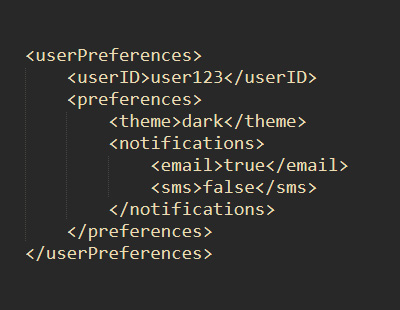What is Extensible Markup Language (XML)?
XML, short for Extensible Markup Language, is a type of markup language designed to store and transmit data over the internet. XML uses tags to define and describe the meaning of data, which allows different software programs to exchange information seamlessly. XML is a versatile technology used for different purposes, such as data exchange, document management, and web services.
Dissecting Extensible Markup Language (XML)
In the 1990s, the World Wide Web Consortium (W3C) sought to improve data exchange on the web. At the time, Hypertext Markup Language (HTML) was the main markup language, but it was not ideal for describing the structure and meaning of data, which hindered data exchange between systems.
To overcome this challenge, the W3C developed Extensible Markup Language (XML) in 1996. XML allowed users to define custom tags, which could describe data structure and meaning in a flexible and extensible manner. This made XML a powerful tool for exchanging data on the web and led to its widespread use across numerous industries and applications.
XML's Structure and Syntax
The structure and syntax of XML are governed by a set of rules that specify how data is represented within an XML document. These rules are designed to make the data readable and processable by both humans and machines.
- Define the Document Type: When creating an XML document, the document type must first be defined using either a Document Type Definition (DTD) or an XML Schema. This defines the structure of the document, including its elements and attributes.
- Create Elements: Tags are used to create elements, which are the building blocks of an XML document. These elements describe the structure and content of the document, and are defined using a start tag, an end tag, and the content of the element.
- Use Attributes: Elements can also have attributes, which provide additional information about the element. Attributes are defined within the start tag of an element and consist of a name and a value.
- Nest Elements: Elements can be nested within other elements to create a hierarchical structure. This allows for the creation of more complex data structures.
- Use Entities: Entities are used to represent special characters or symbols that cannot be represented directly in XML. Entities are defined using a name and a value, and can be used anywhere in the document.
XML in Industries and Applications
XML is used in several industries and applications for data exchange, storage, and management. XML uses include:
Industry-Specific Use Cases
- Healthcare: In the healthcare industry, XML is used for the exchange of medical records and patient data among different systems. Health Level Seven International (HL7) is a used standard for exchanging clinical and administrative information, and it incorporates XML to ensure compatibility and interoperability between different healthcare information systems.
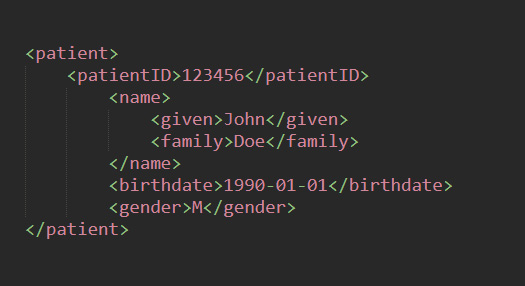
- Finance: The financial industry relies on XML for secure and standardized data exchange between various financial institutions, services, and applications. One such standard is the eXtensible Business Reporting Language (XBRL), which allows organizations to report their financial data in a structured and machine-readable format.
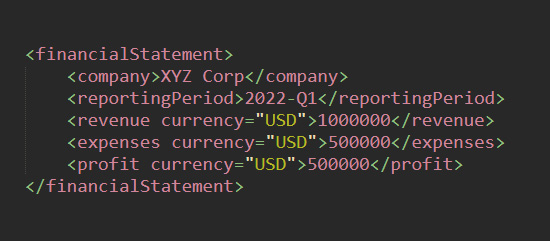
- Telecommunications: XML is used in the telecommunications industry for the configuration and management of network devices and systems. The NETCONF (Network Configuration) protocol employs XML to structure and encode configuration data, allowing network administrators to manage devices effectively and consistently.
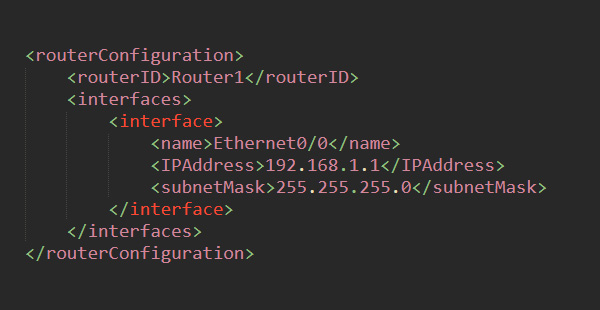
- E-commerce: XML is used in the e-commerce industry to exchange product information, order details, and transaction data between online retailers, customers, and supply chain partners. XML-based standards like the Universal Business Language (UBL) ensure seamless communication and data exchange throughout the e-commerce ecosystem.
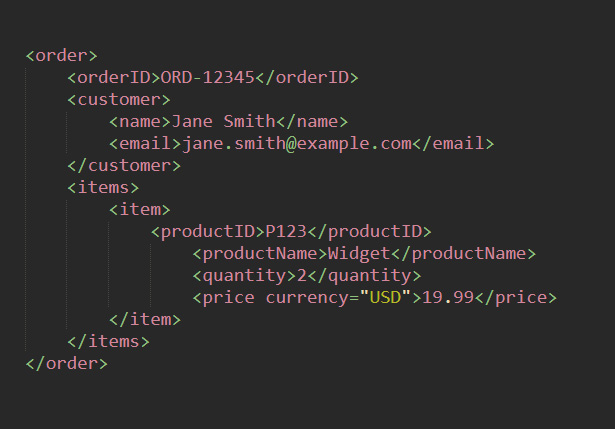
Application Use Cases
- Web Services: Web services use XML for exchanging data between different systems and platforms. SOAP (Simple Object Access Protocol) is an XML-based protocol that enables communication between web services and their clients. XML provides a structured format for message encoding, ensuring compatibility and interoperability.

- Content Management Systems (CMS): CMSs use XML to store, manage, and represent structured content. XML enables the separation of content from presentation, allowing developers to design templates for rendering the content while editors manage the content itself. This separation facilitates easier content management and presentation customization.

- Configuration Files: Many software applications use XML for storing configuration data. XML's human-readable and machine-readable format allows developers and administrators to edit configuration settings easily while enabling the application to parse and apply the settings accurately.
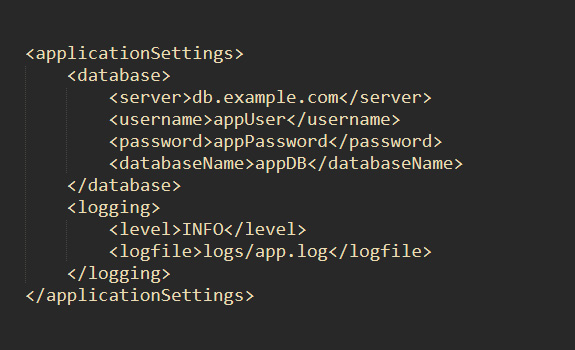
- Data Serialization: XML is used for serializing complex data structures for storage or transmission, allowing applications to save or exchange information in a structured format. XML's self-descriptive nature ensures that the serialized data retains its context and meaning when it is deserialized.
